World War II
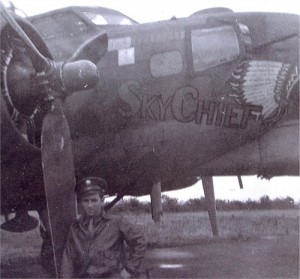
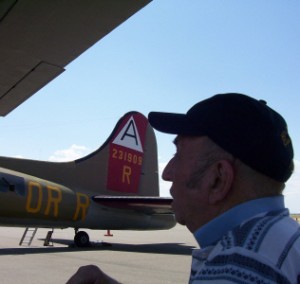 For most World War II history buffs, like me, there is only one bomber worth taking about…the B-17 Bomber. I’m sure there have been many bombers since, but the B-17 will always stand out in my mind. I’m sure that is partly because my dad spent his entire time in World War II as the Top Turret Gunner and Flight Engineer on a B-17G Bomber, stationed at Great Ashfield in Suffolk, England, about nine miles from Bury Saint Edmonds.
For most World War II history buffs, like me, there is only one bomber worth taking about…the B-17 Bomber. I’m sure there have been many bombers since, but the B-17 will always stand out in my mind. I’m sure that is partly because my dad spent his entire time in World War II as the Top Turret Gunner and Flight Engineer on a B-17G Bomber, stationed at Great Ashfield in Suffolk, England, about nine miles from Bury Saint Edmonds.
Dad was so proud of the beautiful, brand-new B-17G Bomber. The thing he might have known, but that I certainly didn’t, is that when those shiny brand-new B-17 Bombers came out and were sent out to battle, they were already considered to be outdated. Of course, outdated, does not mean they couldn’t be used, because they not only could be used, but they were very effective. I suppose that the fact that they were outdated could have meant that they were slower, more awkward, or less accurate, but during World War II, they were very effective, and the people they protected were extremely grateful for their prominent presence on the 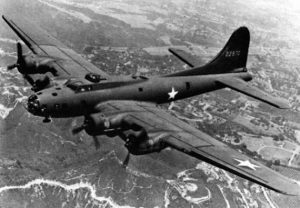
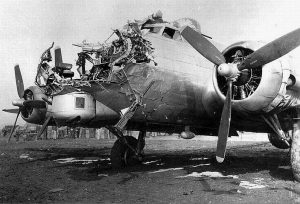 battlefield. Those planes were almost indestructible…short of losing a wing anyway.
battlefield. Those planes were almost indestructible…short of losing a wing anyway.
While the reality is that far more Consolidated B-24 Liberators were produced and were used more extensively than B-17s, both as bombers and in other roles. Nevertheless, the B-17 had a following. It was beloved by so many people…even though it was predominantly used in the Eighth Air Force. Really, it is most likely because the historians, who were mainly focusing on the war in Europe, and who have devoted so much coverage to the Boeing B-17 Flying Fortress, that the B-17 is often thought of as the only American bomber of the war, or at least until the much larger B-29 Superfortress was introduced by Boeing. Still, the B-29 Superfortress, in the minds of many people anyway, couldn’t hold a candle to the B-17 if the minds of the people. In fact, while thousands of Douglas A-20s, North American B-25s, and Martin B-26s, as well as excellent British bombers 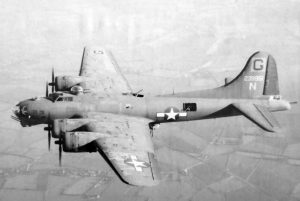
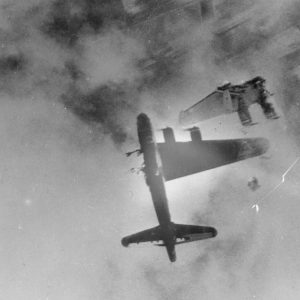 such as the Lancaster and Wellington, served in all theaters of war, it was The Fort, as it has lovingly been called, that has come to symbolize the air war perhaps more than any other bomber…of any era. For me, the B-17 will always be the most awesome, and greatest bomber ever built. When one flies overhead, I recognize the sound. I can pick one out while it is flying, even if it is too far away to hear the engines. If I had to pick an airplane that will always be iconic, the B-17 is it, and always will be.
such as the Lancaster and Wellington, served in all theaters of war, it was The Fort, as it has lovingly been called, that has come to symbolize the air war perhaps more than any other bomber…of any era. For me, the B-17 will always be the most awesome, and greatest bomber ever built. When one flies overhead, I recognize the sound. I can pick one out while it is flying, even if it is too far away to hear the engines. If I had to pick an airplane that will always be iconic, the B-17 is it, and always will be.
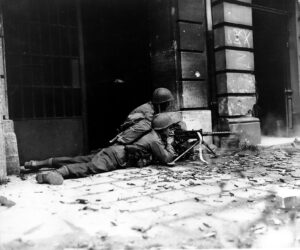
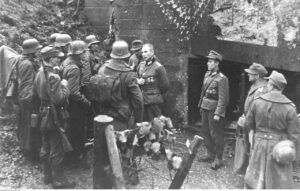 The Nazis were famous for taking no thought for the people around them, as long as they go what they wanted. Achen, Germany was one example of that lack of care and compassion. In October of 1944, the city has been incorporated into the Siegfried Line (known as the Hindenburg Line to the Americans). The Siegfried Line was the main defensive network on Germany’s western border.
The Nazis were famous for taking no thought for the people around them, as long as they go what they wanted. Achen, Germany was one example of that lack of care and compassion. In October of 1944, the city has been incorporated into the Siegfried Line (known as the Hindenburg Line to the Americans). The Siegfried Line was the main defensive network on Germany’s western border.
Fighting around Aachen began as early as the second week of September. It was a period of time known to the Germans as the “First Battle of Aachen.” At that time, the city was defended by the 116th Panzer Division. A panzer division was “a combined arms formation, having both tanks, (German: Panzerkampfwagen, which means armored fighting vehicle, usually shortened to “Panzer”), mechanized and motorized infantry, along with artillery, anti-aircraft and other integrated support elements.” The Panzer Division was under the command of General Gerhard von Schwerin. The proximity of Allied forces made the city officials very nervous, and quickly caused the majority of the city’s government officials to desert their post, long before the evacuation of its citizens was complete. While most of us would be furious over this desertion, Hitler had taken it one step further, by stripping each of the deserting officials of their rank and sending them to the Eastern front as privates. Rather a fitting punishment, but I seriously doubt if Hitler cared about the people. He wanted the officials there for war purposes. Then, in the greatest atrocity, instead of continuing the evacuation, von Schwerin decided to surrender the city to Allied forces. He would have had no idea if the Allies would trat the people kindly or not, but then he really didn’t care. However, on September 13, before he could deliver a letter of capitulation he had written, von Schwerin was ordered to launch a counterattack against American forces penetrating southwest of Aachen. Reluctantly he followed the orders, probably because he fear Hitler more than the Allied forces. He used elements of his panzergrenadier (the motorized infantry) forces. The German general’s Treasonous act when he attempted to surrender the city was irrelevant now, because his letter was never delivered. Unfortunately for him, it fell into the hands of Adolf Hitler, who ordered the general’s immediate arrest. He was replaced by Colonel Gerhard Wilck.
The United States’ VII Corps continued to push German defenses, despite the resistance they encountered on September 12th and 13th. Between September 14 and 16, the US 1st Infantry Division continued its advance in the face of strong defenses and repeated counterattacks, ultimately creating a half-moon arc around the city. Unfortunately, this slow advance came to a halt in late September, due to the supply problem, and the diversion of existing stocks of fuel and ammunition for Operation Market Garden in the Netherlands.
During what would then be known, to the Germans at least, the second Battle of Aachen, American and German forces in and around Aachen, Germany, fought for supremacy between October 2 and 21, 1944. The 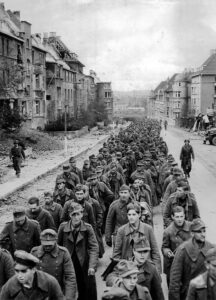
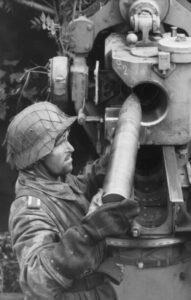 Allies needed the city to advance into the industrialized Ruhr Basin, whether they wanted to fight a battle in the city or not. Although most of Aachen’s civilian population was evacuated before the battle began, much of the city was destroyed and both sides suffered heavy losses. The people would have nothing to come home to. It was one of the largest urban battles fought by US forces in World War II. Aachen was also the first city on German soil to be captured by the Allies. The battle ended with a German surrender, but their tenacious defense significantly disrupted Allied plans for the advance into Germany. The Battle of Aachen had cost both the Americans and Germans dearly; the former suffered over 7,000 casualties, while the latter lost over 5,000 casualties and 5,600 taken prisoner.
Allies needed the city to advance into the industrialized Ruhr Basin, whether they wanted to fight a battle in the city or not. Although most of Aachen’s civilian population was evacuated before the battle began, much of the city was destroyed and both sides suffered heavy losses. The people would have nothing to come home to. It was one of the largest urban battles fought by US forces in World War II. Aachen was also the first city on German soil to be captured by the Allies. The battle ended with a German surrender, but their tenacious defense significantly disrupted Allied plans for the advance into Germany. The Battle of Aachen had cost both the Americans and Germans dearly; the former suffered over 7,000 casualties, while the latter lost over 5,000 casualties and 5,600 taken prisoner.
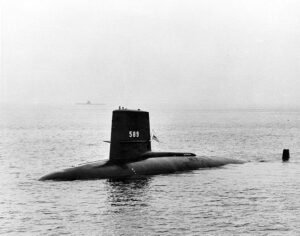
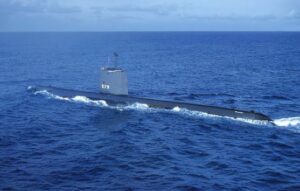 USS Scorpion (SSN-589) was a Skipjack-class nuclear-powered submarine that served in the United States Navy, and the sixth vessel, and second submarine, of the US Navy to carry that name. It was also the fourth nuclear powered submarine to mysteriously go missing in 1968. Scorpion was lost with all its crew, on May 22, 1968. Scorpion is one of two nuclear submarines the US Navy has lost, the other being USS Thresher. The other nuclear-powered submarines to go missing in 1968 at the height of the Cold War were Israeli submarine INS Dakar, the French submarine Minerve, and the Soviet submarine K-129. At the time Scorpion went missing when she was sent to surveil the Soviet submarine K-129, which had apparently already gone missing earlier in the year. The wreckage of USS Scorpion is still at the bottom of the North Atlantic Ocean…with all its armaments and nuclear engine.
USS Scorpion (SSN-589) was a Skipjack-class nuclear-powered submarine that served in the United States Navy, and the sixth vessel, and second submarine, of the US Navy to carry that name. It was also the fourth nuclear powered submarine to mysteriously go missing in 1968. Scorpion was lost with all its crew, on May 22, 1968. Scorpion is one of two nuclear submarines the US Navy has lost, the other being USS Thresher. The other nuclear-powered submarines to go missing in 1968 at the height of the Cold War were Israeli submarine INS Dakar, the French submarine Minerve, and the Soviet submarine K-129. At the time Scorpion went missing when she was sent to surveil the Soviet submarine K-129, which had apparently already gone missing earlier in the year. The wreckage of USS Scorpion is still at the bottom of the North Atlantic Ocean…with all its armaments and nuclear engine.
The Cold War is a term commonly used to refer to a period of geopolitical tension between the United States and the Soviet Union and their respective allies, the Western Bloc and the Eastern Bloc. The first phase of the Cold War began shortly after the end of World War II in 1945. The United States and its allies created the NATO military alliance in 1949 in the apprehension of a Soviet attack and termed their global policy against Soviet influence containment.
Following World War II, tensions were running high between world powers. It is thought that if there was ever a time when a real possibility of a nuclear attack existed, it was during the Cold War. This meant that countries were frantically looking for any advantage they could use to take over their competitors. One way to watch the other countries was to Surveil beneath the waves where they could be more hidden. This surveillance included the use of submarine crews. That, of course, explains the reason for mysterious disappearance of four subs from four different countries virtually at the same time.
The first disappearance was the INS Dakar from Israel, which went down just east of Crete on January 25, 1968. Dakar’s wreckage was found in 1991, but no official cause for the sinking was determined. Next, The French sub Minerve disappeared about an hour outside of Toulon on January 27, 1968. That wreckage was found in 2019, and it showed the hull had separated into three sections. When the French government made the decision to leave the wreck, any chance of answers was eliminated. The Soviet K-129 disappeared earlier in the year, so maybe USS Scorpion was looking for it. Nevertheless, on May 22, 1968, the disappearance conspiracy of 1968 was brought to a close, when USS Scorpion. The submarine would not be fount until October of 1968. The Navy looked into the disaster, but in the end the official court of inquiry said the cause of the loss could not be determined with certainty. Still, there are several theories on what might have happened. One centered around a malfunction of a torpedo. Others suspected poor maintenance may have been the culprit, citing the rushed overhaul.
That was the last report anyone heard about the submarine. After decades of research and investigation, the US Navy has never changed its report that a catastrophic event caused the sinking. Nevertheless, there are those who believe the Scorpion was taken out by the Soviets in retaliation for perceived attack on the K-129 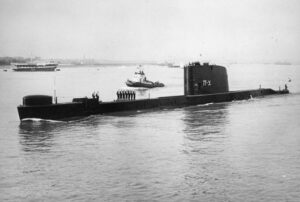
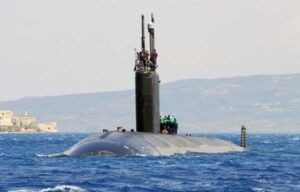 submarine earlier in the year. Neither country will admit or deny any direct action relating to the submarine sabotage, but something happened during the first half of 1968. Four nuclear-powered submarines, from four different countries just don’t start sinking for no reason, and yet, no reason was ever determined. They just sunk.
submarine earlier in the year. Neither country will admit or deny any direct action relating to the submarine sabotage, but something happened during the first half of 1968. Four nuclear-powered submarines, from four different countries just don’t start sinking for no reason, and yet, no reason was ever determined. They just sunk.
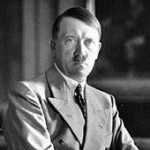
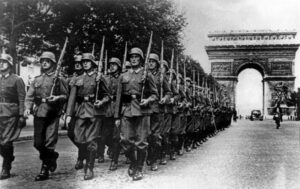 During World War II and even earlier really, Adolf Hitler was in the middle of his plan to take over the world. He was ruthless, and when he invaded a country, he didn’t care how many people died, as long as he got his way. The Battle of France took place between May 10, 1940 and June 25, 1940. The surrender of France to the Nazis in 1940 was a complex situation. The German invasion left metropolitan France at the mercy of Nazi armies. Really, once Paris fell on June 14, 1940, the German conquest of France was complete. Part of the problem was that Marshal Henri Petain replaced Paul Reynaud as prime minister and proved to be a weak leader who announced his intention to sign an armistice with the Nazis.
During World War II and even earlier really, Adolf Hitler was in the middle of his plan to take over the world. He was ruthless, and when he invaded a country, he didn’t care how many people died, as long as he got his way. The Battle of France took place between May 10, 1940 and June 25, 1940. The surrender of France to the Nazis in 1940 was a complex situation. The German invasion left metropolitan France at the mercy of Nazi armies. Really, once Paris fell on June 14, 1940, the German conquest of France was complete. Part of the problem was that Marshal Henri Petain replaced Paul Reynaud as prime minister and proved to be a weak leader who announced his intention to sign an armistice with the Nazis.
While not very well known at the time, French General Charles de Gaulle, made a broadcast on June 18, 1940, to France from England, where he would help with the resistance. The Appeal of June 18 was the first speech made by Charles de Gaulle after his arrival in London in 1940 following the Battle of France. The speech was broadcast to Vichy France by the radio services of the British Broadcasting Corporation (BBC). This speech is considered to have marked the beginning of the French Resistance in World War II. It is regarded as one of the most important speeches in French history. General de Gaulle said in his speech, “The leaders who, for many years, were at the head of French armies, have formed a government. This government, alleging our armies to be undone, agreed with the enemy to stop fighting. Of course, we were subdued by the mechanical, ground and air forces of the enemy. Infinitely more than their number, it was the tanks, the airplanes, the tactics of the Germans which made us retreat. It was the tanks, the airplanes, the tactics of the Germans that surprised our leaders to the point to bring them there where they are today.
But has the last word been said? Must hope disappear? Is defeat final? No!
Believe me, I speak to you with full knowledge of the facts and tell you that nothing is lost for France. The same means that overcame us can bring us to a day of victory. For France is not alone! She is not alone! She is not alone! She has a vast Empire behind her. She can align with the British Empire that holds the sea and continues the fight. She can, like England, use without limit the immense industry of United States.
This war is not limited to the unfortunate territory of our country. This war is not finished by the battle of France. This war is a world wide war. All the faults, all the delays, all the suffering, do not prevent there to be, in the world, all the necessary means to one day crush our enemies. Vanquished today by mechanical force, we will be able to overcome in the future by a superior mechanical force.
The destiny of the world is here. I, General de Gaulle, currently in London, invite the officers and the French soldiers who are located in British territory or who would come there, with their weapons or without their weapons, I invite the engineers and the special workers of armament industries who are located in British territory or who would come there, to put themselves in contact with me.
Whatever happens, the flame of the French resistance must not be extinguished and will not be extinguished.”
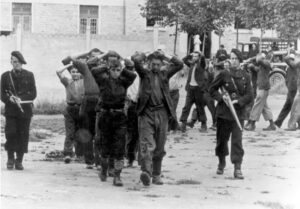
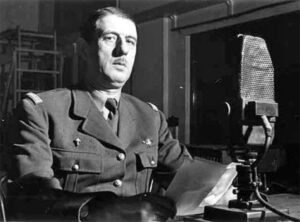 His work with the French Resistance made Charles de Gaulle almost a household word in France. It gave the people hope for freedom. The French Resistance fought to the death to beat the Nazis. This makes me think of current times, and all the freedoms that we have lost. These lessons from the French Resistance are valuable to this day. Never give up. You only lose a battle when you quit fighting. We must never quit fighting.
His work with the French Resistance made Charles de Gaulle almost a household word in France. It gave the people hope for freedom. The French Resistance fought to the death to beat the Nazis. This makes me think of current times, and all the freedoms that we have lost. These lessons from the French Resistance are valuable to this day. Never give up. You only lose a battle when you quit fighting. We must never quit fighting.
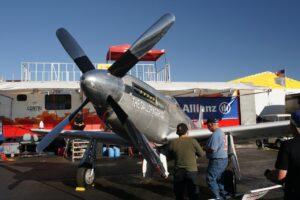 James Kent “Jimmy” Leeward was an American air racer and owner of the Leeward Air Ranch in Ocala, Florida. He was also the owner and pilot of the heavily modified North American P-51 Mustang racing aircraft known as The Galloping Ghost. Leeward loved his plane, loved flying, and especially loved air racing. He loved the thrill of the air shows and putting his plane through its paces. The Galloping Ghost was an amazing aircraft that held various airspeed records. It was also the plane whose fatal crash in 2011 led to several changes to make air shows safer.
James Kent “Jimmy” Leeward was an American air racer and owner of the Leeward Air Ranch in Ocala, Florida. He was also the owner and pilot of the heavily modified North American P-51 Mustang racing aircraft known as The Galloping Ghost. Leeward loved his plane, loved flying, and especially loved air racing. He loved the thrill of the air shows and putting his plane through its paces. The Galloping Ghost was an amazing aircraft that held various airspeed records. It was also the plane whose fatal crash in 2011 led to several changes to make air shows safer.
The Galloping Ghost was built in 1944 by North American Aviation for the Army Air Force. Following its successful service during World War II, the plane was sold as postwar surplus. It was modified and raced by a series of owner over the next half-century, including finally, Aero Trans Corporation in Ocala, Florida. Jimmy Leeward was born on October 21, 1936, in Brackenridge, Pennsylvania to parents Albert and Mary Leeward. He grew up around airplanes, sitting first in the cockpit with his dad as just a toddler. The age of 11 or 12 found him often flying a Piper Cub with his father. At age 14, his father allowed him to fly solo in a North American T-6 Texan trainer aircraft. By age 18, he was 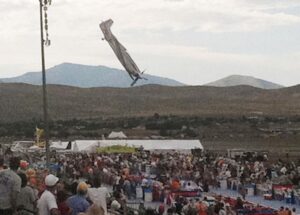 flying charters in a Beechcraft Model 18. While still in college, he flew a Formula One racer in the Fort Wayne air races. He was hooked on air racing from that moment on. In 1964, he was part of the crew on an airplane at the very first Reno Air Races. By 1976, being part of the crew would no longer do, and he first flew his P-51D Mustang “Cloud Dancer” in the Unlimited Class at Reno. In 1983, he purchased the P-51D racer “Jeannie” from Wiley Sanders. He never looked back, later becoming a movie stunt pilot. He was featured in such movies as Cloud Dancer, Smokey and the Bandit 3, Tuskegee Airmen, Thirteen Days, Dragonfly, Thunder Over Reno, Lonely Hearts, and Amelia.
flying charters in a Beechcraft Model 18. While still in college, he flew a Formula One racer in the Fort Wayne air races. He was hooked on air racing from that moment on. In 1964, he was part of the crew on an airplane at the very first Reno Air Races. By 1976, being part of the crew would no longer do, and he first flew his P-51D Mustang “Cloud Dancer” in the Unlimited Class at Reno. In 1983, he purchased the P-51D racer “Jeannie” from Wiley Sanders. He never looked back, later becoming a movie stunt pilot. He was featured in such movies as Cloud Dancer, Smokey and the Bandit 3, Tuskegee Airmen, Thirteen Days, Dragonfly, Thunder Over Reno, Lonely Hearts, and Amelia.
I suppose that with any type of stunt performance, the very real possibility of an accident exists. Many people might assume that it is just a matter of time, but there is no real proof to that statement, just speculation. Nevertheless, on September 16, 2011, Leeward’s “luck” ran out. While he was in the middle of a race over Reno, Nevada, where it all started, Leeward’s racing days came to a tragic end. In the middle of the race, The Galloping Ghost suddenly veered off course. Leeward tried to regain control, but in the end, it was determined that the cause of the crash was “flutter.” Flutter is when the plane is flown faster than it is designed to go. 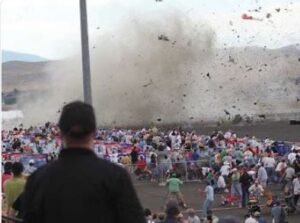 Leeward exceeded by nearly 40 miles per hour, the aircraft’s previous top speed without any previous testing to determine if the aircraft would be able to resist flutter at the new speeds. It couldn’t. When Leeward was unable to regain control, The Galloping Ghost crashed into the crowd at the National Championship Air Races at Reno Stead Airport, in a crash that killed him and 10 others. Additionally, 75 people were injured. An investigation by the National Transportation Safety Board blamed Leeward for “‘operating at the edge of the envelope’ without fully reporting and testing modifications to his plane.” Safety standards for air shows were significantly changed because of this crash. When he died, Jimmy Leeward was 74 years old.
Leeward exceeded by nearly 40 miles per hour, the aircraft’s previous top speed without any previous testing to determine if the aircraft would be able to resist flutter at the new speeds. It couldn’t. When Leeward was unable to regain control, The Galloping Ghost crashed into the crowd at the National Championship Air Races at Reno Stead Airport, in a crash that killed him and 10 others. Additionally, 75 people were injured. An investigation by the National Transportation Safety Board blamed Leeward for “‘operating at the edge of the envelope’ without fully reporting and testing modifications to his plane.” Safety standards for air shows were significantly changed because of this crash. When he died, Jimmy Leeward was 74 years old.
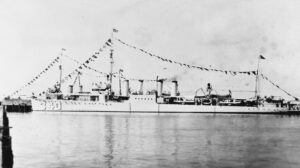
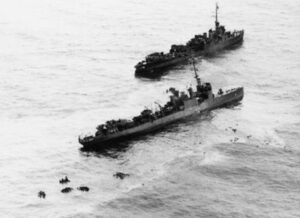 Quite likely one of the most brutal kinds of bombs was the mine. These mostly submerged orbs could take out an unsuspecting ship the minute it made contact with it, usually with no warning at all. So great was the danger to ships in the area, that the nations started building ships for the express purpose of seeking out these mines and destroying them before they were able to destroy a ship in the area. One such ship, the USS Perry was built by Mare Island Naval Shipyard at Mare Island. It was laid down September 15, 1920 and launched October 29, 1921. Named in honor of Oliver Hazard Perry and sponsored by Miss Anne R Scudder, it was commissioned August 7, 1922, with Lieutenant Richard H Booth in command, but it wasn’t initially designed to be a minesweeper.
Quite likely one of the most brutal kinds of bombs was the mine. These mostly submerged orbs could take out an unsuspecting ship the minute it made contact with it, usually with no warning at all. So great was the danger to ships in the area, that the nations started building ships for the express purpose of seeking out these mines and destroying them before they were able to destroy a ship in the area. One such ship, the USS Perry was built by Mare Island Naval Shipyard at Mare Island. It was laid down September 15, 1920 and launched October 29, 1921. Named in honor of Oliver Hazard Perry and sponsored by Miss Anne R Scudder, it was commissioned August 7, 1922, with Lieutenant Richard H Booth in command, but it wasn’t initially designed to be a minesweeper.
Nearly 20 years after the ship was commissioned, the ship was converted to a minesweeper and redesignated DMS-17 on November 19, 1940. This particular ship was the third of eight ships that would be named after Oliver Hazard Perry, which seems to me, rather unheard of, but maybe not. After becoming a minesweeper, the USS Perry (DMS-17) had an illustrious career for almost four years. Veteran Lieutenant JG Charles L Ennis told of his time on the ship, saying, “My battle station was on the Flying Bridge and I saw mines. The proximity of these deadly orbs certainly prevented any rescue ship from effective aid particularly since many of the crew were in the water and would been killed had another mine been exploded.” It was his job to see the danger before it could take down the ship. Of course, they captain knew that it was just as likely that the ship would find the mine when it hit the mine as it was to see it beforehand.
That was exactly the case, when on September 14, 1944 (one day short of the 24th anniversary of the ship being laid down on September 15, 1920), the USS Perry hit a mine at 2:07pm, and sank to the bottom roughly 700 yards south of Angaur Island in less than two hours. Larry Tunks was firing anti-aircraft guns aboard the 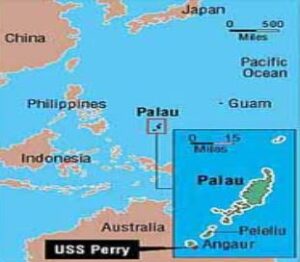
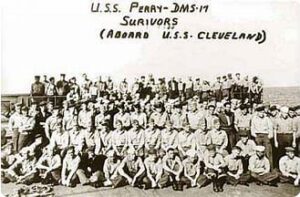 USS Perry when it scraped a mine off Angaur Island, exploding a boiler and killing eight crewmen. One of those killed was his closest ship buddy, a fellow Nebraskan. Another 146 men were plucked from the ocean by US warships in the area. The USS Perry lay undiscovered at the bottom of the Pacific Ocean until it was found on May 1, 2000 by Fish ‘n Fins, owner Navot Bornovski on a 240’ bottom. Navot and Padi Owdi, Jeff Wonnenberg were the first to dive the wreck.
USS Perry when it scraped a mine off Angaur Island, exploding a boiler and killing eight crewmen. One of those killed was his closest ship buddy, a fellow Nebraskan. Another 146 men were plucked from the ocean by US warships in the area. The USS Perry lay undiscovered at the bottom of the Pacific Ocean until it was found on May 1, 2000 by Fish ‘n Fins, owner Navot Bornovski on a 240’ bottom. Navot and Padi Owdi, Jeff Wonnenberg were the first to dive the wreck.

 Like the week in 1941, that changed the lives of Jewish people everywhere and set in motion the most horrific mass bullying and murders in history, our own government has also been trying to force mandates and executive orders on us too. You might say that the mandates of today are not nearly as bad as the Holocaust years, and I would say that you are right, they aren’t as bad…yet!! That horrific week for the Jewish people started on September 1, 1941, when the German Government ordered that all Jews in Germany over six-years-old must wear the Judenstern…a Star of David that was colored yellow and inscribed Jude (Jew) in mock-Hebrew lettering. The action was designed to humiliate, bully, and later set up mass killings of an entire race of people, and it was ordered by one of the most evil people that ever walked the face of the earth…Adolf Hitler. The supposed mark of shame would, in postwar years, become a symbol of the horrific persecution and the Holocaust.
Like the week in 1941, that changed the lives of Jewish people everywhere and set in motion the most horrific mass bullying and murders in history, our own government has also been trying to force mandates and executive orders on us too. You might say that the mandates of today are not nearly as bad as the Holocaust years, and I would say that you are right, they aren’t as bad…yet!! That horrific week for the Jewish people started on September 1, 1941, when the German Government ordered that all Jews in Germany over six-years-old must wear the Judenstern…a Star of David that was colored yellow and inscribed Jude (Jew) in mock-Hebrew lettering. The action was designed to humiliate, bully, and later set up mass killings of an entire race of people, and it was ordered by one of the most evil people that ever walked the face of the earth…Adolf Hitler. The supposed mark of shame would, in postwar years, become a symbol of the horrific persecution and the Holocaust.
Throughout history, the Jewish people have been persecuted and forced to distinguish themselves in similar ways. Prior to September 1st, the Nazis had already demanded that Jews in the East, including Poland, wear the Star of David. The only difference was that in Poland the stars were colored blue instead of yellow. The rest of the bullying, humiliation, and hatred were the same. Still, as with any brutal treatment of a group of people, not everyone agreed with this horrific practice and ordinance. In fact, the Yellow Star Law was very unpopular with the average German citizens, and many of them would tip their hat as a show of respect to the Jewish people as they passed them in the street. Of course, the Nazis couldn’t allow that to continue, and the German authorities quickly forbade the practice of hat tipping, because it was a defiance of their law. The Occupied Zone of France, stalled the law until June of 1942, and Vichy never put it in place even though they were very proactive in persecuting Jews in the Free Zone.
The Yellow Star Law basically made it legal for millions of Jews to be bullied, beaten, and murdered…by any means, and all without any form of punishment for it. That sounds much like the present day (although now over with) Mask Mandates of today. In what was just the beginning of the horror, The Yellow Star Law gave the 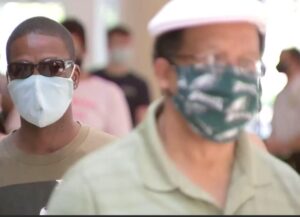
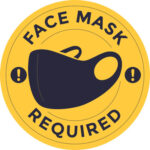 German Army the right to kill a Jew in broad daylight, with witnesses, and no punishment. The Jewish people couldn’t own property, have a business, or even own a home and its contents. They were moved into ghettos and their property was stolen from them. In modern days, we often look at this kind of practice as not possible, but if we don’t watch our government closely, we may find ourselves in very much the “same boat” as the Jewish people of the Holocaust years. Be aware…be very aware.
German Army the right to kill a Jew in broad daylight, with witnesses, and no punishment. The Jewish people couldn’t own property, have a business, or even own a home and its contents. They were moved into ghettos and their property was stolen from them. In modern days, we often look at this kind of practice as not possible, but if we don’t watch our government closely, we may find ourselves in very much the “same boat” as the Jewish people of the Holocaust years. Be aware…be very aware.
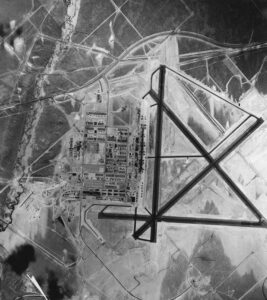
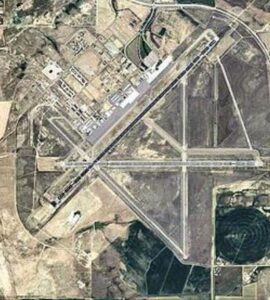 It’s hard to believe that the war my dad fought in was going on over 80 years ago. It’s also hard to believe that 80 years ago today, what is now known as Casper-Natrona County International Airport, was then known as the Casper Army Air Base. In fact, today, September 1, 1942, was the day that the “new” Army Air Base opened. The base was a training base, because as you will recall, World War II was not fought on American soil, although there was one balloon bombing incident that did reach American soil.
It’s hard to believe that the war my dad fought in was going on over 80 years ago. It’s also hard to believe that 80 years ago today, what is now known as Casper-Natrona County International Airport, was then known as the Casper Army Air Base. In fact, today, September 1, 1942, was the day that the “new” Army Air Base opened. The base was a training base, because as you will recall, World War II was not fought on American soil, although there was one balloon bombing incident that did reach American soil.
Over the years that the Casper Army Air Base was in use, over 16,000 bomber crew members were trained there. The Casper Army Air Base was one of many Army Air Force bases built during World War II. Training began a few months after the base opened. As a training hub, the base at one time had nearly 5,000 people living and working out of about 400 buildings. Many of the buildings from the old base stand today.
During the three years that the Casper Army Air Base was active, 140 Casper Army Air Base aviators died in 90 plane crashes. Of course, not all of the crashes were at the base. Most of the crashes were in Wyoming, but many occurred out of state when the fliers were on longer training flights. New crews arrived at Casper typically by train. Each crew consisted of two pilots, a navigator, a bombardier, a radioman, flight engineer, and four gunners. They immediately began a strict regimen of training. Pilot training was rigorous. The crews endured countless hours of advanced instruction in navigation, gunnery, bombing, armaments, flight engineering, and flying. They were also trained in aerial gunnery, air-to-ground gunnery, formation flying, night navigation, and of course, bombing. Joye Kading (longtime Casper Army Air Base secretary) remembered that Major General Hap Arnold once visited the base. She said, “He was so thrilled with this base and how it was operated and how careful it was, and how congenial all the people were that were working with one another.” That is truly how most people in Casper are, even today. Of course, you always find a few who don’t fit that description, but they are the rarity, and not the norm.
The base closed in 1945 and sat abandoned until the War Assets Administration turned the airfield over to civil 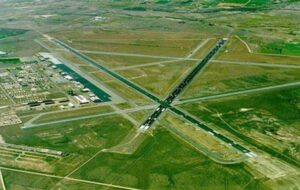
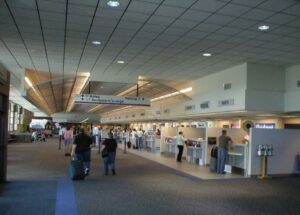 control in the late 1940s, and in 1949 it became Natrona County Municipal Airport. At that time, it replaced the former Casper Airport…Wardwell Field, whose runways are now streets in the town of Bar Nunn. On December 19, 2007, the name was changed to Casper-Natrona County International Airport. These days, approximately 35,000 flights go in and out of the airport every year.
control in the late 1940s, and in 1949 it became Natrona County Municipal Airport. At that time, it replaced the former Casper Airport…Wardwell Field, whose runways are now streets in the town of Bar Nunn. On December 19, 2007, the name was changed to Casper-Natrona County International Airport. These days, approximately 35,000 flights go in and out of the airport every year.
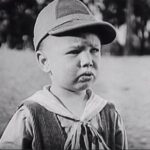 Most people today wouldn’t remember a 1920s show called “Our Gang” unless they happen to be an old black and white movie buff. The show was about a “gang” of young kids, and all the mischief they got into. Of course, they weren’t bad kids, just adventurous kids. One of those kids was Robert E “Bobby” Hutchins, who was born on March 29, 1925, to James and Olga (Constance) Hutchins in Tacoma, Washington. His father was a native of Kentucky and his mother a native of Washington. Young Hutchins was a popular child actor who played “Wheezer” in the “Our Gang” movies. His short movie career began in 1927, when he was just 2 years old. He was only eight
Most people today wouldn’t remember a 1920s show called “Our Gang” unless they happen to be an old black and white movie buff. The show was about a “gang” of young kids, and all the mischief they got into. Of course, they weren’t bad kids, just adventurous kids. One of those kids was Robert E “Bobby” Hutchins, who was born on March 29, 1925, to James and Olga (Constance) Hutchins in Tacoma, Washington. His father was a native of Kentucky and his mother a native of Washington. Young Hutchins was a popular child actor who played “Wheezer” in the “Our Gang” movies. His short movie career began in 1927, when he was just 2 years old. He was only eight 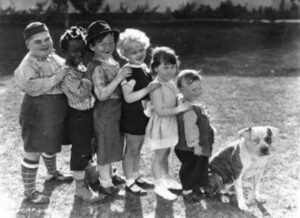 when he left the series in 1933. Hutchins was given the nickname of “Wheezer” after running around the studios on his first day so much that he began to wheeze. The nickname fit him so well that it was incorporated into the show. Wheezer appeared in 58 “Our Gang” films during his six years in the series. For much of his run, “Wheezer” was portrayed as the tag-along little brother, put off by the older children but always eager to be part of the action.
when he left the series in 1933. Hutchins was given the nickname of “Wheezer” after running around the studios on his first day so much that he began to wheeze. The nickname fit him so well that it was incorporated into the show. Wheezer appeared in 58 “Our Gang” films during his six years in the series. For much of his run, “Wheezer” was portrayed as the tag-along little brother, put off by the older children but always eager to be part of the action.
As would always be the case with a show like “Our Gang,” Hutchins eventually outgrew the series, so he and his family moved back to Tacoma, where he 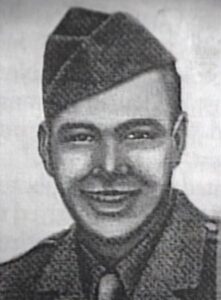 entered public school. After he graduated from high school, he joined the US Army Air Forces in 1943, enrolling in the Aviation Cadet Program with the goal of becoming a pilot. Hutchins was killed in a mid-air collision on May 17, 1945, while trying to land a North American AT-6D-NT Texan, serial number 42-86536, of the 3026th Base Unit, during a training exercise. Hutchins’ plane struck an AT-6C-15-NT Texan, 42-49068, of the same unit at Merced Army Air Field in Merced, California…later known as Castle Air Force Base. The other pilot, Edward F Hamel, survived the crash. Hutchins’ mother, Olga Hutchins, had been scheduled to travel to the airfield for his graduation from flying school, which would have occurred the week after he died. He is buried in the Parkland Lutheran Cemetery in Tacoma, Washington. When you see him acting the “Our Gang” movies, it’s really sad to think that his life would be cut short at the age of just 20 years. Nevertheless, he was doing what he really wanted to do, and serving his country in the process.
entered public school. After he graduated from high school, he joined the US Army Air Forces in 1943, enrolling in the Aviation Cadet Program with the goal of becoming a pilot. Hutchins was killed in a mid-air collision on May 17, 1945, while trying to land a North American AT-6D-NT Texan, serial number 42-86536, of the 3026th Base Unit, during a training exercise. Hutchins’ plane struck an AT-6C-15-NT Texan, 42-49068, of the same unit at Merced Army Air Field in Merced, California…later known as Castle Air Force Base. The other pilot, Edward F Hamel, survived the crash. Hutchins’ mother, Olga Hutchins, had been scheduled to travel to the airfield for his graduation from flying school, which would have occurred the week after he died. He is buried in the Parkland Lutheran Cemetery in Tacoma, Washington. When you see him acting the “Our Gang” movies, it’s really sad to think that his life would be cut short at the age of just 20 years. Nevertheless, he was doing what he really wanted to do, and serving his country in the process.

 Until August 18, 1941, Adolf Hitler had been systematically murdering the mentally ill and developmentally disabled people in Germany, but word was getting out, and the “good” people of Germany were understandably outraged by such an evil practice. The people began protesting, and in an effort to avoid rioting, Hitler announced on this day in 1941, that the practice would cease. I’m sure the people were glad, and they most likely thought they had won this battle, but as we all know, Adolf Hitler is a man who lies…in fact it was all lies!!
Until August 18, 1941, Adolf Hitler had been systematically murdering the mentally ill and developmentally disabled people in Germany, but word was getting out, and the “good” people of Germany were understandably outraged by such an evil practice. The people began protesting, and in an effort to avoid rioting, Hitler announced on this day in 1941, that the practice would cease. I’m sure the people were glad, and they most likely thought they had won this battle, but as we all know, Adolf Hitler is a man who lies…in fact it was all lies!!
The killing began in 1939, when head of Hitler’s Euthanasia Department, Dr Viktor Brack oversaw the creation of the T.4 program. At first, the program began systematically killing of children deemed “mentally defective.” Children were transported from all over Germany to a Special Psychiatric Youth Department, after being told that the children were going to be treated there, but they were killed instead. Parents were told that their children had become ill, and simply died. Later, because of Hitler’s hatred mainly for Jewish people, certain criteria were established for non-Jewish children. Even if they “qualified” to be killed because of their mental issues, they had to be “certified” mentally ill, schizophrenic, or incapable of working for one reason or another before they could be killed. Jewish children already in mental hospitals, whatever the reason or whatever the prognosis, were automatically to be subject to the program and killed. The victims were either injected with lethal substances or were led to “showers” where the children sat as gas flooded the room through water pipes. Later the program was expanded to include adults.
As this practice continued, the people started getting angry, and before long protests began mounting within Germany, especially by doctors and pastors. A few of these people even had the courage to write Hitler directly and describe the T.4 program as “barbaric” but others circulated their opinions more discreetly. Heinrich Himmler, head of the SS and the man who would direct the systematic extermination of European Jewry, had only one regret: that the SS had not been put in charge of the whole affair. “We know how to deal with it correctly, without causing useless uproar among the people.”
In 1941, when Bishop Count Clemens von Galen denounced the euthanasia program from his pulpit, Hitler decided that he did not need such publicity. He ordered the program suspended but didn’t tell the German people that the suspension was only to be in Germany. Still, even though it was suspended in Germany, 50,000 
 people had already fallen victim to the hideous program. Then came the “other shoe dropping” as the practice was picked up in earnest in occupied Poland. Hitler was a liar, and he was evil. He assumed that the people of the world were stupid, and he could hide his horrific practice from them. Stopping the practice in the name of humane practices…not!! Lies!! All of it!!
people had already fallen victim to the hideous program. Then came the “other shoe dropping” as the practice was picked up in earnest in occupied Poland. Hitler was a liar, and he was evil. He assumed that the people of the world were stupid, and he could hide his horrific practice from them. Stopping the practice in the name of humane practices…not!! Lies!! All of it!!

